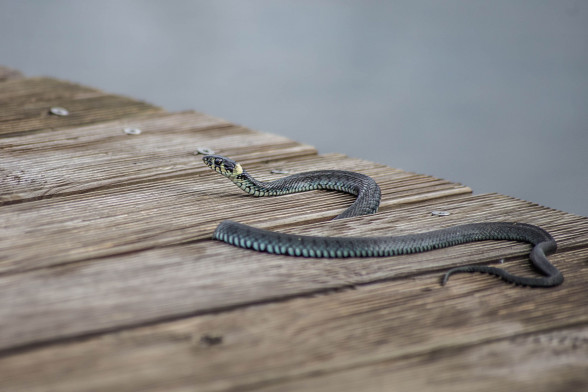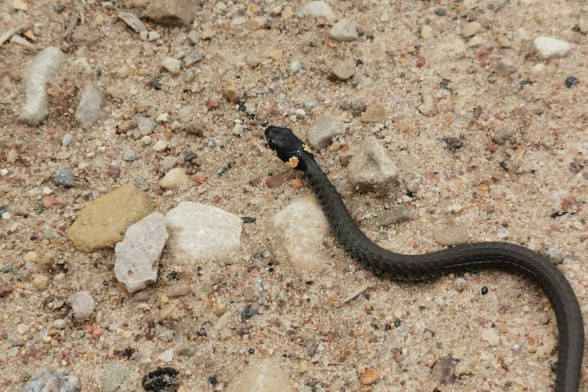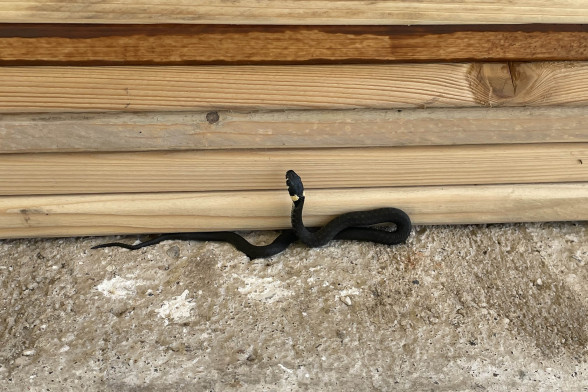
Grass snake (ringed snake, water snake)
Habitat
It lives mainly in wet areas. Swims well, spends a lot of time near or in the water. Winters in deep caves, under tree roots or building foundations. Wakes up in the morning in the sun to warm up and move around. Winters in rock piles, cavities under building ruins, under tree roots or stumps, in deep rodent burrows.
Diet
They feed mainly on frogs, fish, tadpoles, and less often on small mammals, birds and larger invertebrates. The food is swallowed alive; the swallowing process lasts from a few minutes to several hours, depending on the size of the prey. They can starve for long periods, but are particularly voracious once they have access to food.
Important and interesting facts
The grass snake is the largest snake found in Latvia. It can reach a length of 1.5 metres, or in very rare cases 2 metres, but specimens as long as 1 metre are rare. The grass snakes living in Latvia are usually grey or black. There is a yellow or whitish collar behind the head, which explains the alternative name – ringed snake. These spots are the most characteristic feature of the grass snake, distinguishing it from other snakes in Latvia, including the black form of the viper.
The grass snake swims and dives very well, being able to stay underwater for up to half an hour. The snake is hunted by badgers, foxes, cats, hedgehogs and various birds of prey. To defend itself, the grass snake tends to pretend dead by falling on its back, opening the mouth and sticking out its tongue.
When picked up, the animal secretes a smelly, garlic-like liquid from its anal glands. The secretion is difficult to wash off. In some countries, they were used as domestic animals on farms to catch mice.
Information sources: latvijasdaba.lv, Wikipedia
Photos: redzet.eu, pixabay.com



